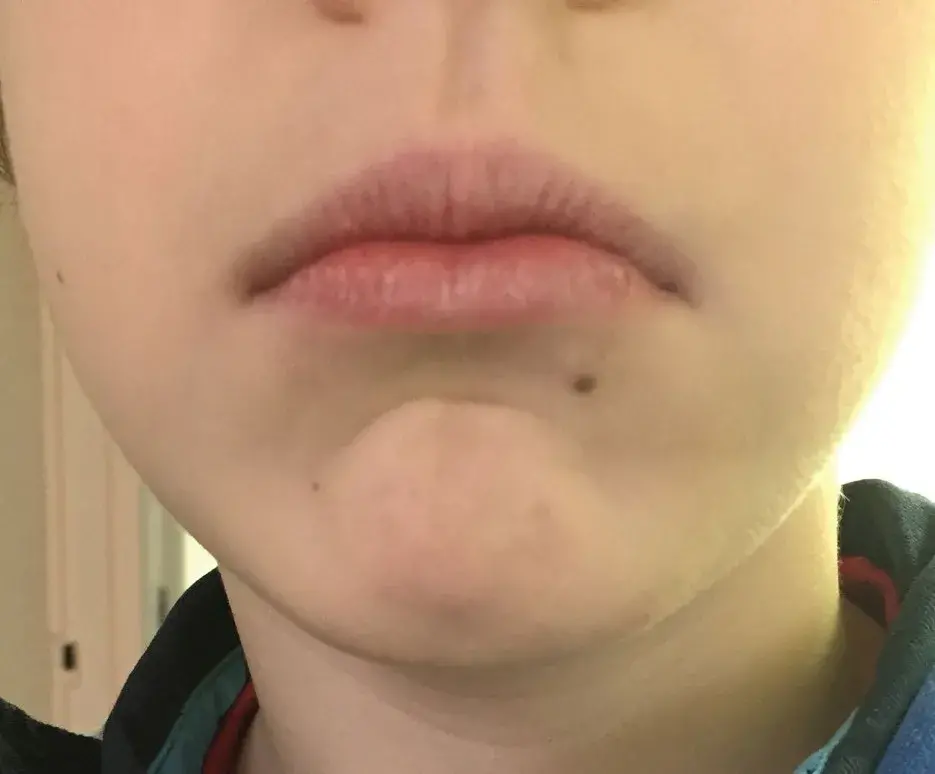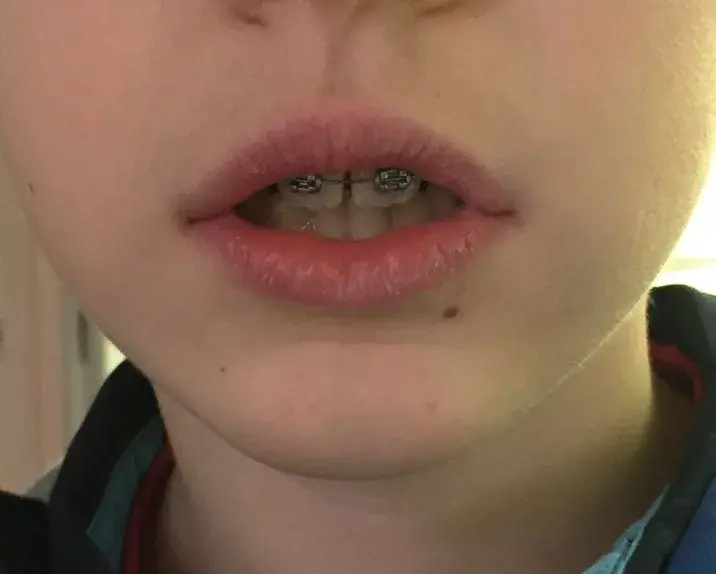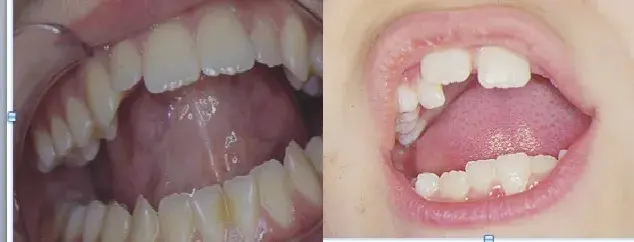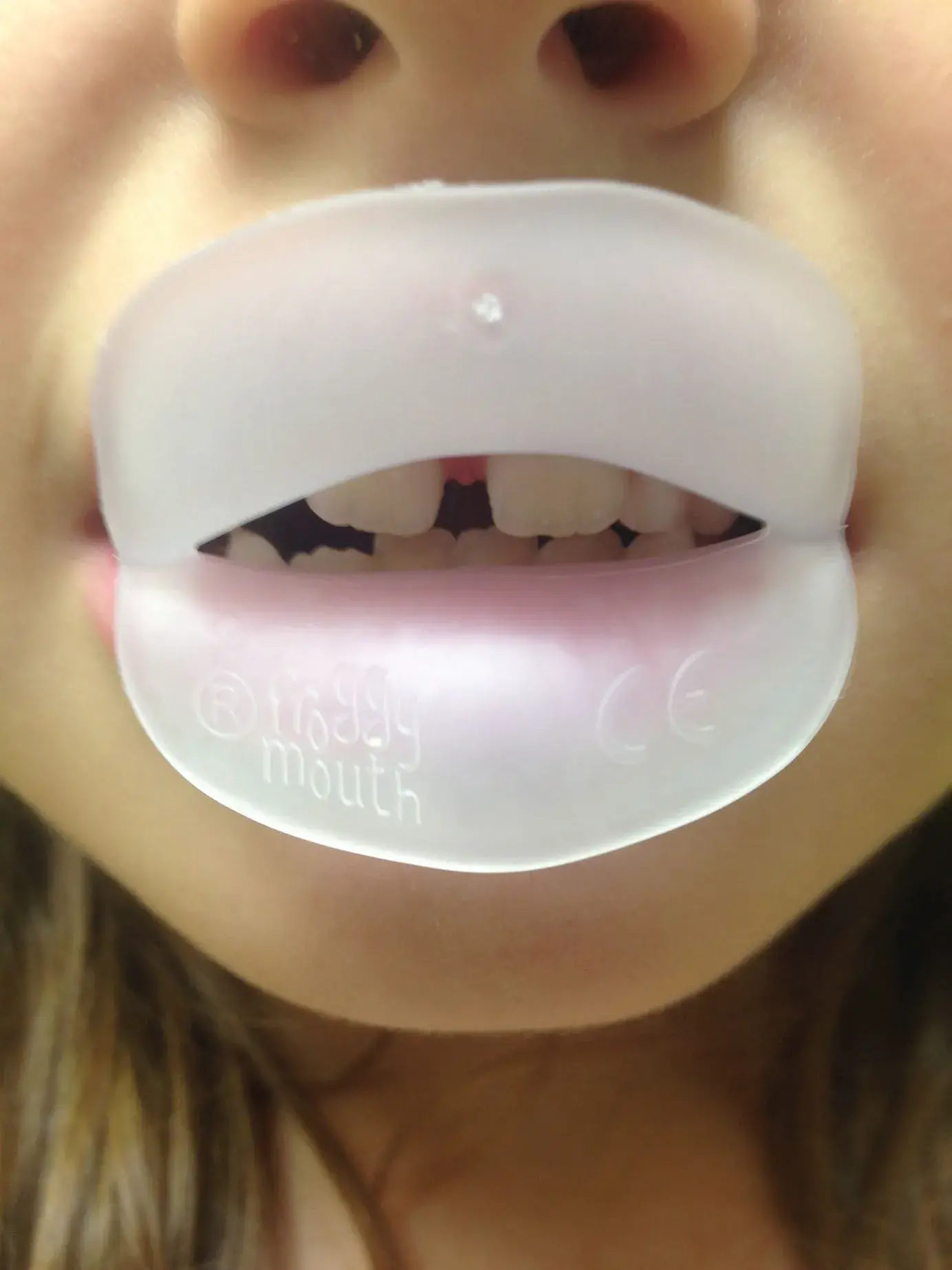How biochemistry and neurophysiology are involved in the re-education of deglutition
Abstract
The transition from suction-type deglutition to dental-type deglutition needs to occur spontaneously between 3 and 4 years of age, but the genetic information for this is not expressed systematically. When this transition does not occur spontaneously, the new program needs to be engrammed by conscious actions or by stimulation of the sensory-motor areas.
You have the opportunity to gather more in-depth information about functional treatment on our website.
Prolegomenon
Suction-type deglutition, which is a physiological mode for swallowing saliva in young infants, is an automatization that develops at the level of the brainstem in utero. Dietary alteration progressively integrates a cortical activity for control of the programming of deglutition, although this first mode of deglutition remains physiological as long as the primary dentition has not come in and mastication has not begun. Beginning at four years of age, the implementation of mastication sets off a new programming of deglutition in 60% of children referred to as dentition-type deglutition. It takes place naturally (bottom-up approach), stimulating the sensory-motor areas: "The anatomical components are the same but the programming of deglutition is reconfigured" [4]. It involves developmental plasticity. By way of the muscle forces that it generates, this new mode of deglutition promotes optimal growth of the maxilla [5].
But the endogenous or innate factors only give rise to potentialities. "It is only expressed when adequate exogenous conditions occur in a timely manner" (JP Changeux) [1]. Dawson Church stated that "genes are activated or inactivated by our beliefs, our emotions, and our attitudes".
Two main causes for the persistence of suction-type deglutition: the child has never had the opportunity to discover this new mode of functioning as their dietary habits did not elicit mastication; the child discovered it but the limbic system, a prerequisite for engramming a new program, did not retain it, generally for psychological reasons (emotional immaturity, continued thumb sucking, use of a pacifier or bottle). Most of the children requiring orthodontic treatment are found in the latter category. Re-education of orofacial functions (plasticity linked with experience) is hence a necessity recognized by nearly all practitioners when undertaking orthodontic treatment, but it is necessary to properly understand the neuroanatomy as well as the physiology to achieve reproducible and controllable results.
Re-education of Deglutition
What strategies should be implemented?
Hope that normalization of the dental arches will lead to an alteration in function. This is all the more feasible when using a removable retainer. Indeed, the use of an item that alters the proprioceptive feelings will automatically lead to an alteration of the afferent signal and hence facilitate alteration of the efferent signal. Alteration of the anatomical setting by the treatment will allow the program to engage naturally, although without monitoring the new praxis could well remain dysfunctional. However, care must be taken with fixed retainers. If functional alteration occurs, there are no adverse consequences, although if there is dysfunction, the patho-logical muscle forces will be iatrogenic not only at the level of the alignment of the teeth blocked by the wire but also at the level of the supporting bone tissues, and this can be the origin of a pathology that ultimately affects the periodontium. Uncontrolled movements of the roots of the lower incisors can also occur in a short amount of time [11].
Use of a functional devices, generally at night, aimed at alteration of tongue posture: LEN type, Robin device, tongue elevator, Farrell or Bergensen-type gutters, although the outcomes remain inconsistent as long as the dysfunctional commands are not inhibited, although wearing of such devices (between 12 and 14 hours per day) could be a difficult experience for the child and rejected by the limbic system. Being worn for an extended period of time is all the more unnecessary as the period of encoding is diurnal, only the consolidation is nocturnal. "Functional brain imaging has revealed electrical reactivation during sleep, as if the brain replays the daytime neuronal activities"[10].
Consultation with professionals such as speech therapists or physiotherapists (top-down approach). First of all, the child needs to become aware of the movement that they make and the movement that they should be making, the repetition before automization can occur. Knowing what one needs to do is, however, not enough to be able to do it (e.g., consider the difficulties with learning a new sport). This is a deliberate learning process by repetition and sensory-motor adjustment.
Eric Kandel, Nobel laureate in Medicine in 2000 for his work on short- and long-term memory, has shown that in the latter case there is an increase in the activity of neurotransmitters at the level of the synapses involved, but what we are dealing with here is short-term memory [8].
Schema Eric Kandel
"Memory is not based on the properties of the nerve cells as such, but on the nature of the connection between neurons and how they process the sensory information received". Learning consists of tracing new circuits, and this plasticity arises either due to reconfiguration of existing programs or by the creation of new ones.
Reconfiguration of existing circuits
Understanding of the conversion of short-term memory into long-term memory was elucidated by the work of Kandel on Aplysia:
Light stimulation releases neurotransmitters at the level of the synapse, while the nucleus is not involved in short-term memory (e.g., weekly speech therapy sessions). This information only remains available for a relatively short period of time.
When the stimulations are repeated in a short period of time (e.g., several weekly sessions and daily exercises at home), a dialogue is generated between the synapse and the nucleus that activates CREB* and it produces a new protein indispensable for the transition to long-term memory. This new protein, CPEB**, in the synapse functions as a prion and ensures transmission of the message in a permanent manner.
Creation of new circuits
In parallel, a highly emotional state can short-circuit the normal constraints and produce a sufficient quantity of MAP-kinase* molecules that are then sent to the nucleus to inactivate CREB-2 molecules, thereby promoting activation of CREB-1 and direct imprinting of this experience in the long-term memory. *MAP-kinase: acts in conjunction with protein kinase A to initiate long-term memorization.
Froggy Mouth® is a device that, when worn for 15 minutes per day over a relatively short period of time and while watching television (a reward recognized by the limbic system), forces the child to discover a new way of deglutition by the subcortical route; thus, not by stimulation of the activity of neurotransmitters but by the creation of new synapses. Indeed, by not being able to purse their lips, they are unable to swallow by suction, aspirating between the front of the mouth and the rear of the mouth, triggering an abrupt and immediate reaction at the level of the brainstem: find a new program for deglutition.
Faced with this new situation, the child employs the patterns that they have available. If they do not have a pattern suitable for the new situation, they will need to generate one. This amounts to incidental and nearly immediate learning.
The concurrence of the contraction of the levator muscles of the mandible in a stable and comfortable dental occlusion with those of the soft palate and the styloglossus allows peristaltic movement of the tongue (provided that the transverse and vertical anatomical environment are compatible) and disconnection of the lip-tongue synkinesis. This new program of deglutition immediately becomes integrated into long-term memory by the creation of a new neuronal circuit.
It is, however, only the first step, which is necessary but not sufficient to transition to automatization.
Automatization
The child then has two programs available to swallow saliva. Just like on a computer when two programs are available, it is the activation of one or the other icon that initiates its execution. The therapist, therefore, needs to monitor the posture at rest to obtain relaxation of the perioral muscles and dental occlusion upon deglutition. The control by the trigeminal nerve that is solicited at this step substitutes for the control by the facial nerve and it inhibits the role of the latter.
The trigeminal nerve, which also controls the respiratory centers in the pontine tegmentum by its sensory nucleus, promotes restoration of nasal breathing, allowing the posterior part of the tongue to adopt an elevated posture (a lingual dome).Similarly, contraction of the tensor tympani muscle of the hammer, which is innervated by the trigeminal nerve, allows the middle ear to be ventilated by dilation of the Eustachian tube, thereby reducing serous otitis problems.
 Figure 1. The icon for suction-deglutition is activated by the facial nerve: "my lips are spread, my teeth are not touching each other".
Figure 1. The icon for suction-deglutition is activated by the facial nerve: "my lips are spread, my teeth are not touching each other".
 Figure 2. The icon for dentition-type deglutition: "my lips are pursed, my molars in occlusion" is activated by the trigeminal nerve, which not only allows molar occlusion but also protects the tongue from being bitien due to the abundance of trigeminal nerve endings in its epithelial lining
Figure 2. The icon for dentition-type deglutition: "my lips are pursed, my molars in occlusion" is activated by the trigeminal nerve, which not only allows molar occlusion but also protects the tongue from being bitien due to the abundance of trigeminal nerve endings in its epithelial lining
 Figure 3. Contrary to what speech therapists recommend, it is not the apical part of the tongue that needs to gain the child’s attention but the posterior part. Obsessed with the sensory search for the retro-incisive papilla, the child risks raising the lingual apex, leading to a lowering of the posterior part that will prevent engagement of the styloglossus, which is the levator muscle of the lingual dome [6].
Figure 3. Contrary to what speech therapists recommend, it is not the apical part of the tongue that needs to gain the child’s attention but the posterior part. Obsessed with the sensory search for the retro-incisive papilla, the child risks raising the lingual apex, leading to a lowering of the posterior part that will prevent engagement of the styloglossus, which is the levator muscle of the lingual dome [6].
 Figure 4. Worn for 15 min per day while watching television, Froggy Mouth® allows relaxation of all of the anterior facial muscles
Figure 4. Worn for 15 min per day while watching television, Froggy Mouth® allows relaxation of all of the anterior facial muscles
Control can be transferred to the parents, who need to take note of the labial posture five times per day and congratulate or correct the child. These two actions are not similar, as they involve the cortico-cortical circuits that traverse the basal ganglia and the cortico-cortical circuits that traverse at the level of the cerebellum.
The work by Robert Bjork (UCLA) affirms that the number of monitoring sessions is more important than the number of learning sessions for engrammation of a new pattern. This requirement for inhibition of the wrong circuit is fundamental to automatization of the correct program.
Learning is Eliminating
Only Froggy Mouth® allows this double action: by only controlling the labial posture it allows postural alteration of the tongue and the pharyngeal-velar muscles by a cross-talk effect. "This dual posterior and occlusal functional lingual necessity, too often forgotten by re-educators of oral functions, is likely one of the causes of the too frequent failures of re-educations" (Delaire) [5]. Wearing a Froggy Mouth® from 3 years of age onward does not present any contraindications. It is compatible with all types of orthodontic devices in adolescents and is still effective in adults (neurogenesis or enrichment of the extensions of existing neurons). It also allows intervention in the re-education of disabled children.
Conclusions
Re-education can be based on two different approaches: a bottom-up approach that directly targets the deficit or the anomaly, but that does not require becoming aware of this deficit or anomaly, and a top-down approach that aims to generate awareness of the deficit or of this anomaly and the explicit acquisition of new corrective or compensatory strategies.
Early normalization of orofacial functions allows prevention to be approached at its three stages irrespective of the selected technique are preventing deformations from occurring, once they have occurred, preventing them from becoming worse, once corrected, preventing them from recurring.
Further information about functional appliances using are accessible for you to learn in our course "Functional appliances. Explore-compare-select".
Author:
Patrick Fellus
References
Patrick F. Orthodontie précoce en denture temporaire Cdp. 2003.
Jean-Pierre C. L’homme neuronal Fayard. 1983.
Gérard C. Les oralités humaines Doin. 2010.
Gérard C. Oralité du fœtus Sauramps Médical. 2015.
Arthur G. Neurosciences. Piccin. 1996.
Eric K. A la recherche de la mémoire. Odile Jacob. 2011.
Patrick F, Waddah S, Lalauze-Pol R. De la dysfonction à la dysmorphose. Apport de Froggy mouth. Edition Orthopolis.2016.
Fournier M, Girard M. Acquisition and sustainment of automatic reflexes in maxillofacial rehabilitation. Orthod Fr. 2013; 84: 287-294.
